- JST Home
- /
- Strategic Basic Research Programs
- /
 PRESTO
PRESTO- /
- project/
- Development of Basic Material Conversion Science for Global Environment/
- [Material Conversion] Year Started : 2024
[Material Conversion] Year Started : 2024
Shoji Iguchi
Electrolytic synthesis of urea from nitrate towards advanced recycling of nitrogen and carbon
Grant No.:JPMJPR2471
Researcher
Shoji Iguchi
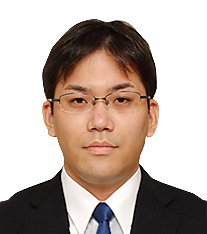
Associate Professor
Graduate School of Engineering
Kyoto University
Outline
Urea is widely used for fertilisers, adhesives, and resins. In this study, development of advanced urea synthesis from nitrate in wastewater and carbon dioxide in exhaust gas under ambient temperature and pressure using electricity derived from renewable energy sources will be investigated, with the aim of electrifying manufacturing. For this purpose, I would like to work on the design and development of innovative electrocatalysts and reaction fields effective for the generation of active nitrogen and carbon species and the formation of nitrogen-carbon bonds.
Ryota Osuga
Elucidation of reaction dynamics of liquid-phase heterogeneous acid-base catalysis using infrared spectroscopy
Grant No.:JPMJPR2472
Researcher
Ryota Osuga

Assistant Profrssor
Institute for Catalysis
Hokkaido University
Outline
There has yet to be an established method for characterizing the acid-base properties of heterogeneous catalysts in the liquid phase. This study aims to establish a characterization method using infrared (IR) spectroscopy and try to clarify the reaction dynamics of biomass conversion reactions that contribute to the realization of carbon neutrality based on operando IR observation. Feeding back the information obtained from these analyses into catalyst design can contribute to developing highly efficient catalytic reaction systems.
Kensuke Kiyokawa
Highly Efficient Amine Synthesis Using Ammonia as a Nitrogen Source
Grant No.:JPMJPR2473
Researcher
Kensuke Kiyokawa
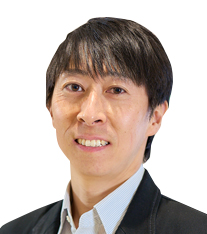
Assistant Professor
Graduate School of Engineering
The University of Osaka
Outline
The method of the direct synthesis of highly valuable amines from ammonia, which plays a central role in the nitrogen cycle, would be ideal from a resource cycle and energy efficiency point of view. In this research, we will develop a fundamental technology for environmentally friendly amine synthesis from ammonia as a nitrogen source.
Yuichiro Kobayashi
Development of functional polysulfide polymer materials from waste sulfur
Grant No.:JPMJPR2474
Researcher
Yuichiro Kobayashi
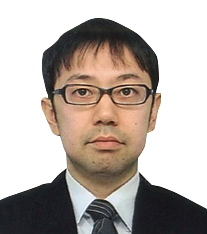
Assistant professor
Graduate School of Science
The University of Osaka
Outline
By using reagents such as epoxies, isocyanates, and carbonyl chlorides, various stepwise polymerized polysulfide polymers were synthesized, and their physical properties were evaluated. A systematic evaluation was conducted to correlate their structure and properties, aiming to establish a platform. In pursuing practical applications, a low environmental impact method for sulfur polymer synthesis, specifically solvent-free and/or room temperature synthesis, was developed. Additionally, functional materials such as lithium-sulfur batteries and self-healing materials were created using the resulting polysulfide polymers.
Takashi Nakamura
Precise Conversion of Biomass Carbon Resources by Macrocyclic Complexes
Grant No.:JPMJPR2475
Researcher
Takashi Nakamura
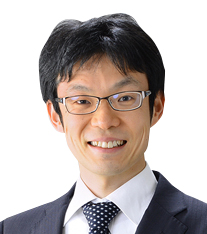
Assistant Professor
Institute of Pure and Applied Sciences
University of Tsukuba
Outline
Biomass has attracted much attention as a carbon resource to replace petroleum, but it has yet to replace petrochemicals as a raw material for fine chemical synthesis, and is mainly used as combustion energy. In this research, I aim to develop macrocyclic complexes that recognize substrates by coordination bonds as a new means of direct conversion of biomass carbon resources and precise control of their chemical modification. The research target is to achieve highly selective catalytic reactions depending on their intermetallic distances.
Zen Maeno
Development of multifunctional catalysts to innovate capture of low-concentration CO2 and reductive utilization
Grant No.:JPMJPR2476
Researcher
Zen Maeno
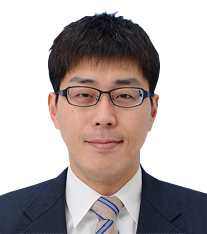
Associate Professor
School of Advanced Engineering & Chemical Engineering
Kogakuin University
Outline
The applied research aims to construct a CO2 capture and utilization process that can simultaneously capture low-concentration CO2 from a gas mixture containing O2, and directly convert the captured CO2 into CO and CH4 by hydrogenation. The project will develop an innovative catalytic reaction field that solves all the problems of conventional CO2 capture and hydrogenation, such as deactivation by O2, use of large amounts of platinum group elements, operation at high temperatures (in the 300-400°C range) and low CO2 processing rates.
Kei Murata
Development of novel transition-metal photocatalysts that transform C1 resources
Grant No.:JPMJPR2477
Researcher
Kei Murata

RIKEN ECL Research Unit Leader
Center for Sustainable Resource Science
RIKEN
Outline
This study aims to develop photocatalytic reactions that transform C1 compounds to various hydrocarbons based on the chemical bond formation/cleavage by active metal complexes generated photochemically. These reactions are expected to contribute to the realization of carbon circulations that utilize the abundant C1 resources and solar energy.
Susumu Yamamoto
Structure-Activity Relationship in Catalysis Revealed by Multimodal X-ray Operando Measurements
Grant No.:JPMJPR2478
Researcher
Susumu Yamamoto

Professor
International Center for Synchrotron Radiation Innovation Smart
Tohoku University
Outline
Catalyst surfaces under reactions are dynamic reaction fields with structural fluctuations, but the relationship between structural fluctuations and catalytic activity is not clear. In this study, I will construct a multimodal X-ray operando measurement system that can simultaneously measure the chemical and electronic states and the structure of catalyst surfaces using the high-brilliance X-rays from the NanoTerasu Synchrotron Light Source to clarify the relationship between structural fluctuations and catalytic activity of catalysts. By developing a new scientific concept of dynamic catalytic surfaces, I aim to establish a guideline for the development and design of new catalysts.
Takayuki Yamamoto
Development of resource-saving devices oriented to full utilization of electrolytes
Grant No.:JPMJPR2479
Researcher
Takayuki Yamamoto
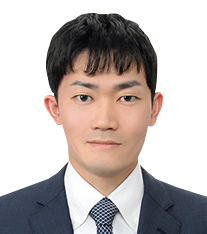
Junior Associate Professor
Institute of Advanced Energy
Kyoto University
Outline
Resource-saving devices without rare metals are needed to meet the increasing demands for storage batteries in the near future. This project focuses on dual-carbon batteries composed of solely carbon-based active materials. The research goal is the enhanced battery performance via the development of novel highly concentrated electrolytes available around room temperature, which is achieved by combining multiple ionic species in ionic liquid electrolytes.
Taiga Yurino
Non-Classical Recycle of Cyanide for the Carbon and Nitrogen Cycle
Grant No.:JPMJPR247A
Researcher
Taiga Yurino

Assistant Professor
Faculty of Engineering
Hokkaido University
Outline
Carbon and Nitrongen cycle has recently been focused as the one of the solutions to the environmental problems. Cyanide is the smallest molecular anion which consist of carbon and nitrogen. Cyanide is regarded as a crucial industrial chemical. However, it is highly poisonous. To detoxify it, cyanide should be degradated into CO2 and N2, and thus it could not be recycled. In this research project, I will use cyanide as carbon and nitrogen resources for the preparation of highly valuable chemical compounds. Effective fixation and non-classical recycle of cyanide will be achieved.













